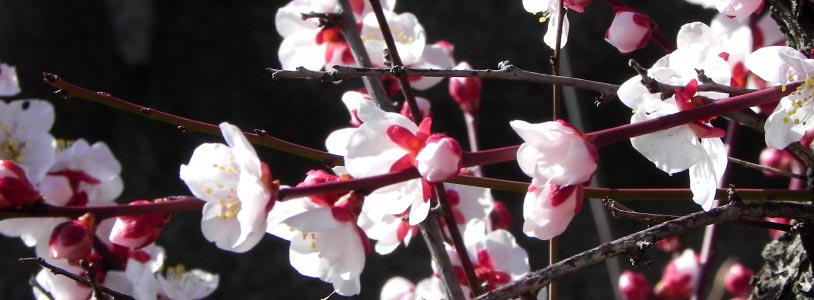- Life top
- Daily Life
- Applying for LINE stickers
- Exhibition of Matsumoto-sensei
- Hana - Shiba-Inu
- Elec. handicraft & Akihabara
- Supermarkets in the area
- Takaido Civic Center
- Building a house
- Horrible dentists
- Judo therapy
- In an elderly care home
- Parties
- Cosplay bonenkai 2010
- Gainax cosplay bonenkai
- Friends from Gainax
- Friends from schooldays
- Party at Bar Espion
- Home party with cheese
- Music Life
- TARO Quartet
- Maeda-san - violin maker
- Chigusa Kindergarten
- Seniors playing music
- My viola debut
- Torakyo regular concert
- Toranomon Orchestra
- Four seasons
- Shrine visit of the New Year
- New Year´s postcard
- Snowfall in Tokyo
- Hina-matsuri and hina-dolls
- Sakura - cherry-blossom
- Sakura - what I missed most
- Fireworks Festival
- People
- Itakura - his adventurous life
- Naoto - his country life
Hina-matsuri and hina-dolls
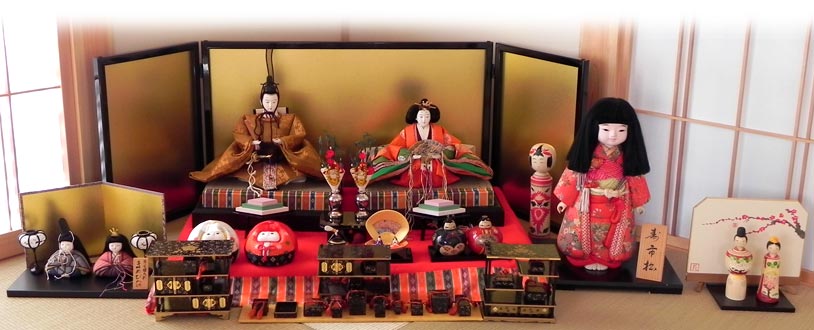
Line-up of Hina dolls; the most traditional style dolls in the middle and five other couples in different styles. The biggest doll is not a hina-doll but a sort of amulet, which was presented by an aunt to our daughter on her birth.
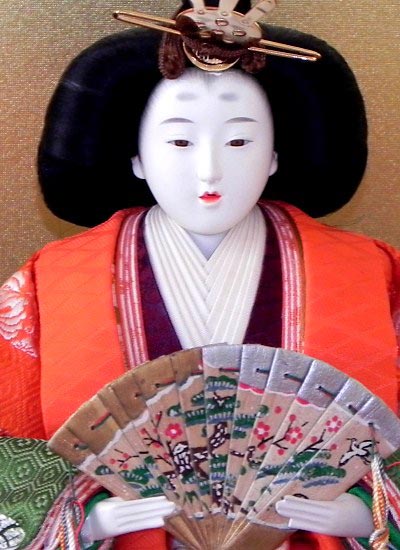
Ohina-sama (empress)
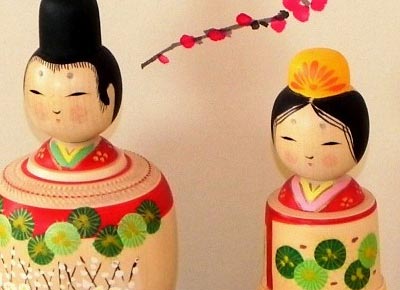
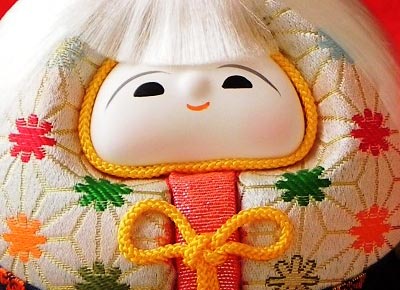
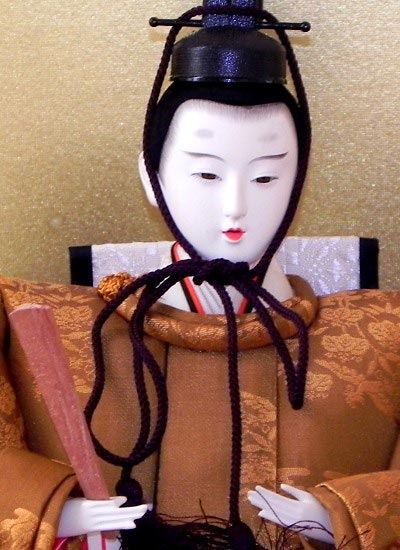
Odairi-sama (emperor)
March 3rd is "Hina-matsuri". Hina-matsuri (Doll Festival) is a traditional seasonal festival praying for the happiness of girls and in the center of the festival are the dolls in ancient court dresses.
When our daughter was born, a set of dolls was presented by my wife's parents. It is customary for maternal grandparents to present hina-dolls to their granddaughter. Our set originally had three platforms; "odairi-sama" (emperor) and "ohina-sama" (empress) on the top platform, "sannin-kanjo" (three court ladies) on the second platform and "gonin-bayashi" (five musicians) on the third platform. Many small models of furniture, food and daily utensil were placed between the dolls.
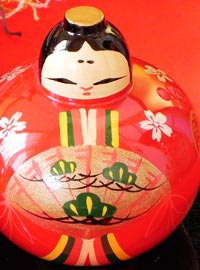
However, the dolls other than odairi-sama and ohina-sama went lost though we do not remember when. Maybe during one of our numerous house-moving operations. As a result, our two main dolls were left to my regret without their followers.
Exactly speaking, they are not totally alone, because many other odairi-sama and ohina-sama joined them in the meantime. Odairi-sama and ohina-sama are often made as a minimum set without their followers and diverse types of hina-dolls are made all over Japan. Nowadays, we display six pairs of hina-dolls together. So, I presume that our original odairi-sama and ohina-sama do not feel lonely.
We have traditionally five seasonal festivals on the odd day and month. This tradition came originally from China and among five festivals three are still very popular and somewhat related to children: third day of the third month (hina-matsuri), 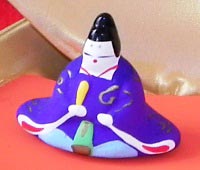 fifth day of the fifth month (tango-no-sekku) and seventh day of the seventh month (tanabata).
fifth day of the fifth month (tango-no-sekku) and seventh day of the seventh month (tanabata).
Hina-matsuri is also called "Momo-no-sekku" (seasonal festival of peach) and peach blossoms should be decorated together with hina-dolls. However, March 3rd is slightly too early for peach blossoms. In our garden plum blossoms are instead in their full bloom at the beginning of March. Peach blossoms bloom in Japan almost in the same period as cherry blossoms, from the end of March to the beginning of April.
This kind of inconsistencies between the traditional events and the calendar was created when Japan officially adopted the solar calendar in place of the traditional lunar calendar in 1873. Despite the time difference of about one month between the lunar and the solar calendars, it became usual to celebrate traditional festivals according to the solar calendar and the confusion was created.
There are of course exceptions. In provinces, for example, people still celebrate the New Year according to the lunar calendar like in China. However, except for New Year, other traditional dates and months are automatically translated into solar system and we have many unhappy situations.
For example, New Year is called "Shinshun" which means "New Spring". However, I find it difficult to deem January as spring. If it were mid-February, we could find various indices for spring. In "Chushingura", a traditional number of Kabuki theatre, the climax scene takes place in the snowfall in Edo at the end of a year. However, snow 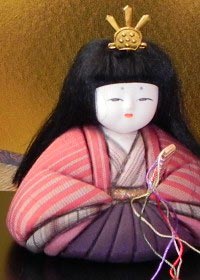 usually falls in Tokyo after the change of years and most frequently from the end of January till the middle of March. As for Tanabata festival on July 7th people often complain that the sky never clears up on this important day, the only day of a year when Orihime (Weaving princess) and Hikoboshi (Cowboy prince) are allowed to cross the galaxy and meet each other if the sky clears up, according to an old Chinese legend. However it is quite natural that rain falls on July 7th, because June in the lunar calendar corresponds to the rainy season.
usually falls in Tokyo after the change of years and most frequently from the end of January till the middle of March. As for Tanabata festival on July 7th people often complain that the sky never clears up on this important day, the only day of a year when Orihime (Weaving princess) and Hikoboshi (Cowboy prince) are allowed to cross the galaxy and meet each other if the sky clears up, according to an old Chinese legend. However it is quite natural that rain falls on July 7th, because June in the lunar calendar corresponds to the rainy season.
| (*) | Orihime and Hikoboshi correspond to two first-magnitude stars Vega and Altair. A story associating these two stars to a weaving princess and a cowboy prince was created in Cina and provides the basis for Tanabata festival. |
I woulod like to add here a saying related to the display of hina-dolls; if a girl is idle and fails to put back the dolls in time after the festival, she cannot get married in time. Obviously such a saying was created by parents who were troubled by lazy daughters. However, nowadays, such a saying cannot be a threat to lazy girls. Many daughters do not want to leave their parents and are not ready to give up the comfortable status as "parasite single".
